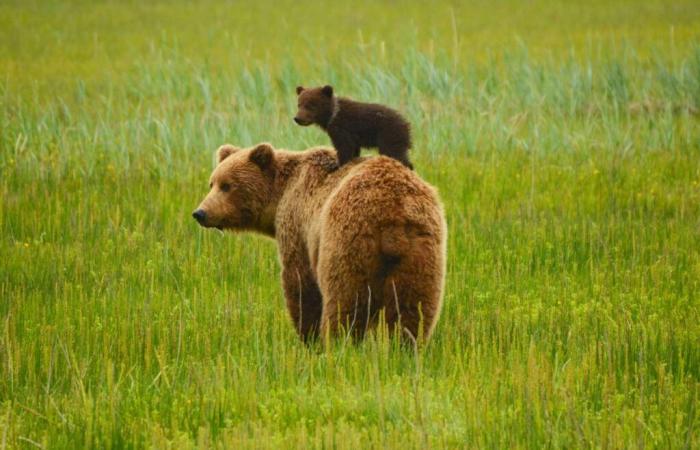At the start of 2024, a disturbing case reminds us of the dramatic consequences of our environmental negligence. In Telluride, Colorado (United States), the discovery of the body of a sick bear highlighted lightlight a serious problem: the devastating impact of waste plasticsplastics on wildlife. This story highlights the urgency of action to protect our environment and its inhabitants.
The Bear of Telluride: Chronicle of a Death Foretold
It all started when residents of Telluride reported a visibly sick bear in their community. John Livingston, porteporte-word of Colorado Parks and Wildlifedescribes the animal in an alarming state: “ He had moussemousse around the mouth and eyeseyes swollen, suggesting he was battling an infection… He could only walk 20 or 30 meters before having to lie down ».
Faced with this critical situation, the authorities made a difficult but necessary decision: to euthanize the animal to end its suffering. Rachel Sralla, area manager for Colorado Parks and Wildlifeexplains with emotion: “ We couldn’t leave a sick bear like this, knowing he was suffering and struggling to survive. It’s a call we wish we never had to make ».
Revealing autopsy: plastic, silent killer
The bear’s post-mortem examination reveals a shocking truth: its digestive system was clogged with an alarming amount of plastic waste and other human detritus. John Livingston explains: “ There were all kinds of paper towels, wipes, plastic bag type materials and indigestible food contents “. This accumulation of waste had prevented the digestiondigestion normal of the animal, condemning it to a slow and painful death.
This tragic case is unfortunately not isolated. Bears, endowed with a smellsmell remarkable and with an excellent memory, are particularly vulnerable to this type of danger. They can spot dangerous materials like plastic from great distances and are prone to consuming substances they cannot digest.
A global problem: the impact of plastic on wildlife
The Telluride bear tragedy is part of a broader context of plastic pollution affecting global wildlife. According to Earth.org estimates, up to 100,000 marine animals die each year after ingesting or becoming entangled in plastic. Scavenging mammals and birds are particularly likely to consume plastic, targeting human remains.
Here is an overview of the animals most affected by plastic pollution:
| Type d’animal | Main threats |
| Marine mammals | IngestionIngestiontangle |
| Seabirds | Ingestion, entanglement in nets |
| Sea turtles | Confusion of plastic bags with jellyfish |
| Terrestrial mammals | Waste ingestion in urban areas |
Acting for a plastic-free future
Faced with this alarming situation, everyone can help reduce the impact of plastic on wildlife. Here are some concrete actions to implement:
- use reusable water bottles;
- favor foods with packaging biodegradablebiodegradable ;
- invest in reusable containers for food leftovers;
- carefully sort your waste and ensure that it is out of reach of animals.
By adopting these simple actions, we can collectively reduce our consumption of plastic and, consequently, reduce the risks for wildlife. The Telluride bear tragedy reminds us that every action counts in preserving our environment and its most vulnerable inhabitants.
The death of this bear sends us a poignant call to rethink our relationship with plastic and the nature that surrounds us.






